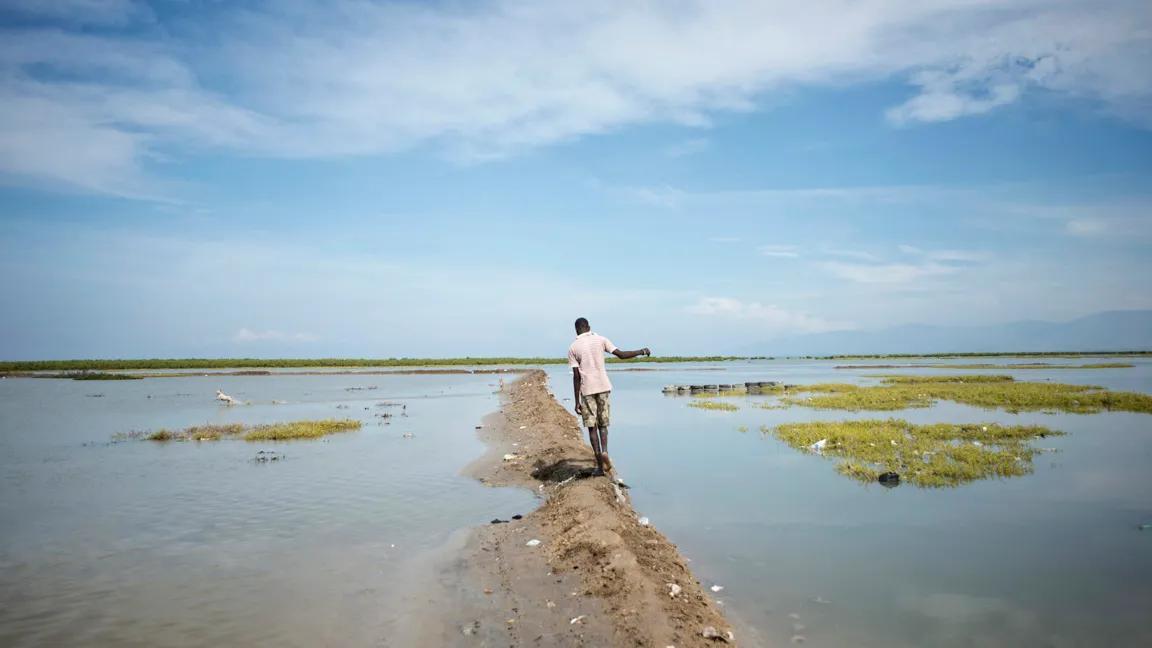By Samuel Obedgiu
Africa-Press – Botswana. Have you come across the word climate refugee? Well, as per the status quo the United Nations doesn’t have single definition that can be used to describe a climate refugee. Additionally, even the refugee’s convention of July 1951 doesn’t include climate change and yet the truth is you cannot help what you cannot define. The changing trend of our planet’s climate is making some parts of the world unlivable, the oceanic water levels are rising, some areas are receiving either too little or too much precipitations, cyclones have become super charged, hence forcing victims to flee for their lives.
Over the past, humans have known conflicts or wars to be a major cause of refugee crisis, but of recent the believes seem to be shifting because climate change has emerged as a threat multiplier and hence many nations are now embarking on challenging that eventuality. On 10th November this year, the Australian Prime Minister Anthony Albanese with his Tuvaluan counterpart Kausea Natano, signed the Australia-Tuvalu Falepili Union treaty. The treaty covered migration, climate change, security arrangements and their bilateral diplomatic relationship. This treaty which the Tuvaluan prime minister referred to as “a beacon of hope” will allow 280 (21⁄2 % of the country’s population) Tuvaluan nationals affected by climate Change to live, work and study in Australia. Of course, it was a geo-political move by Australia as well to lock in Tuvalu’s support since it’s one of the countries that still recognizes Taiwan and doesn’t have any relations with Beijing.
It’s a big deal for Tuvalu since it’s one of the most threatened country on earth by climate change because of its geography. It’s a low-lying country located at 3meters above sea level, with a population of 11,204. As the levels of the oceanic water continue to rise, Tuvalu is a t big risk of sinking below the sea, and the government knows this. Last year its government decided to create a digital replica of the country, “a Tuvalu in the metaverse”. The primary idea behind that move was to conserve the country’s history and culture such that incase the land disappears the memory would persist.
Recent study shows that, the world could have up to 1.2 billon climate refugees by 2050. Currently, up to about 21million people are displaced annually by floods, storms, droughts, or wildfires. In 2019, India had the largest numbers of internally displaced climate refugees of 5,018,000. The Philippines had 4,094,000, Bangladesh had 4,086,000, China had 4,034,000, the US had about 1,000,000 climate refugees, and all these had to do with one denominator which is the rising sea levels
According to the data from the World Economic Forum, 30years ago about 160million people living in coastal areas were at risk of becoming climate change refugees, and now the number of potential victims is at 260million which is almost twice as it was three decades ago and what makes it even more complicated is that majority of these people live in poor and developing nations. They don’t have the resources to relocate or to invest in latest technologies. Like in Bangladesh, reports say that by 2050 about 17% of the country could be submerged and along with it shall vanish the homes of 20million people.
The climate change risks for countries that are the largest emitters in the global north are low compared to what is felt in the global south. Joint research from the European commission and other international agencies found that’s its generally low income-lower emission countries facing the highest risk. For instance, Bangladesh contributes just 0.3% to global emissions and yet they face the high threat from climate change. The same with Africa, just in only 2022 around 7million Africans were internally displaced due to climate change related crisis. There are high chances that by 2050, half of world’s climate refugees could be Africans and yet the continent contributes just only 4% to global carbon emissions.
The Australia’s approach to take in the Tuvaluan citizens affected by climate Change and give them opportunities to live, work and study, is a great one. But that’s a compromise that not every developed country is willing to make. The next best thing that the developed nation should do besides taking drastic steps to cut down their emissions, is that if they can’t open their borders, they should be willing to open their wallets to fund climate actions and programs in affected nations.
Source: Nile Post
For More News And Analysis About Botswana Follow Africa-Press






